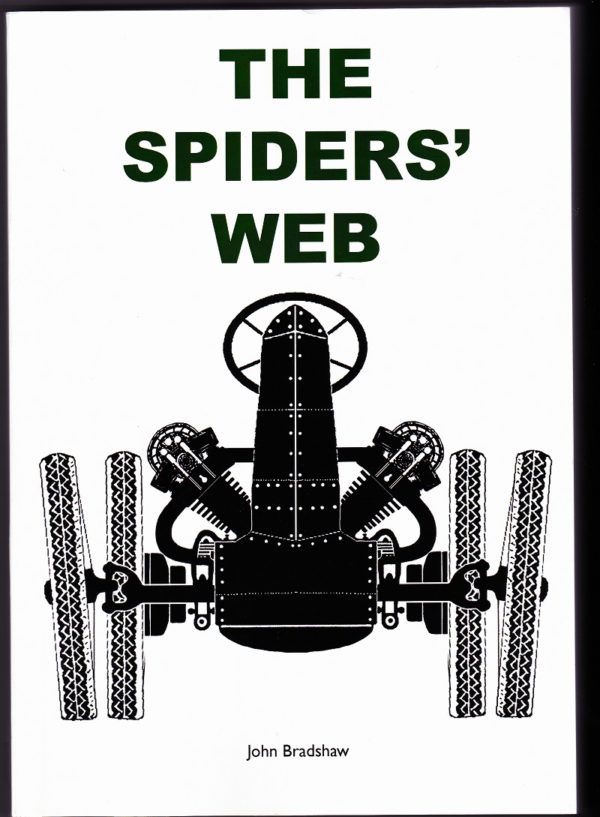
by John Bradshaw
2021 review by James Loveridge
Self evidently the essence of Motor Sport is to travel over a pre-determined distance as quickly as possible and in a shorter time than anyone else aiming to do the same. Achieving this has produced many interesting vehicles and, predominately, men and The Spiders’ Web by John Bradshaw is the story of a couple of those vehicles and one of those men.
One of the earliest forms of motor racing was the time trial, in other words against the clock. In Europe these were from one town to another and back again or along a stretch of road either flat or uphill. In Britain the former was banned so the latter became popular but, of necessity, over quite short stretches (a strong public anti-motor car attitude dictating caution). In the early 1920s Basil Davenport decided this was the sport for him.
Although from a wealthy background – his family owned P Davenport of Macclesfield, a substantial manufacturer of Silk Cord, Braids and Ribbons, so he could have afforded a sporting car – Basil was an iconoclast and was determined to do things his way. The earliest motor cars were chain driven and even though shaft drive rapidly took over some other iconoclasts persisted with chains. Amongst this fraternity were Ron Godfrey and Archie Frazer Nash (GN) and it was their cars which attracted Basil.
Basil was clearly a very skilled and inventive engineer and was able to develop the GN he acquired beyond what Messrs Godfrey and Fraser Nash could produce, with the result that Davenport become one of the most successful and famous racing drivers of the 1920s, winning hundreds of awards and trophies. His speciality was Hill Climbing but he was equally adept at Sprinting and in the rather specialist form of Sand Racing. He did not compete in track or circuit racing, finding going round and round boring.
This book, provided with a wealth of illustrations, tells the very detailed history of two of Basil’s creations, Spider 1 and Spider 2 and his achievements with them, often competing against the likes of Raymond Mays and, on one special occasion, against Rudolf Carracciola and Hans Stuck all in professionally manufactured and extremely expensive motor cars with considerably more power than a GN. It explains the various modifications he, along with named helpers, made to ensure he consistently improved his times. It also tells of his experience with other GN cars and gives the history of those two cars, which are still being raced, up to the present day.
Mr Bradshaw has found a considerable amount of information largely from Basil’s comprehensive records not only of the work he did on the cars but also of the events in which he competed and of his achievements. He has also found material in motoring press and journals and from many of those who knew Basil and who spent time with him.
There are interesting and amusing snippets of information such as how Basil and his “team” acquired some potent liquids for them to use to brew up their special fuels and how “knicker elastic” from the factory performed some key functions in keeping these very temperamental motor cars going.
The book is imaginatively put together, details of others involved given separately so as not to interrupt the flow and several Heath Robinson cartoons giving almost relevant light relief.
The book is in paperback format and, whilst the photographs might be sharper if on gloss paper, they are adequately clear and certainly give the atmosphere of those early days.
Publisher: JRB Publishing
Price: £40.00 plus £5.00 P&P.
Description: Softback. 350 pages. Richly illustrated, with numerous previously unpublished photos and drawings, both old and new.
ISBN: 978-1-9997588-5-1
Copies can be got from John at Grange Farmhouse, 1 Penny Lane, Guarlford, Nr. Malvern, Worcs., WR13 6PG







Leave a Comment